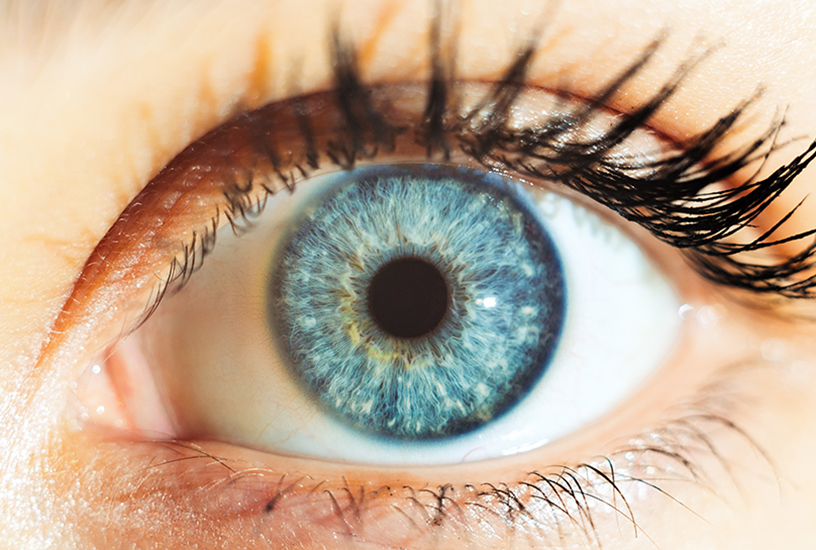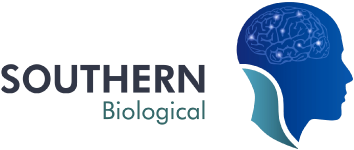Testing Ocular Dominance

AUSTRALIAN CURRICULUM ALIGNMENT
-
Multicellular organisms rely on coordinated and interdependent internal systems to respond to changes to their environment
- Explaining how body systems work together to maintain a functioning body using models, flow diagrams or simulations
BACKGROUND
Conducting a quick comparative study of both giraffes and humans will reveal two sets of very different eyes. Although both are mammals, you will notice that human eyes are situated in the front of the head, whereas a giraffe’s eyes are positioned on the sides of its head. The positioning of an animals’ eyes reveals the type of vision they have and their relative position within the food chain. Predators (including humans) typically exhibit binocular vision, whereby both eyes look towards the same direction and located toward the front of the head. Whilst human eyes may look in the same direction, each eye sees a slightly different image. The brain has a tendency to accept the images produced by one eye over another. This preference is called Ocular dominance. Estimations suggest that 1/3 of all humans have a dominant right eye, whilst 1/4 are dominant in their left eye. Rare cases exist where neither eye is dominant over the other. Binocular vision depends upon the brain interpreting two images as a complete picture with enhanced depth. Predators use depth perception to aid in their hunt for food. Predators would struggle finding and capturing prey without binocular vision and proper depth perception. Unlike humans, giraffes have panoramic vision, which means they can see in different directions simultaneously as their eyes are located on the sides of their head. This is an evolutionary attribute. The anatomy of prey species such as giraffes prioritise being aware of their surroundings. Panoramic vision allows prey a chance to run or hide from predators, but it does not allow the brain to perceive depth as accurately as binocular vision.
This practical is aimed at exploring how the brain processes information from both eyes. Students determine their own eye dominance and understand eye dominance amongst a statistical group. Students gain an understanding of the difference between binocular and panoramic vision. Students should consider the relationship between eye dominance and left or right handedness. This engaging practical explores the senses, perception, and evolutionary differences in predator-prey relationships.
PREPARATION - BY LAB TECHNICIAN
- Position 5 geometric images on the wall around the room at student eye level. These images should be simple black and white images that include circles, squares and simple shapes. Alternatively, you may use existing posters and images on the classroom wall. Laminate the images for multiple uses if you wish.
- Place a line of masking tape on the floor 8-10 metres away from the image. Ensure students have a clear visual path from the line to the image.
- Draw up a data table for the whole class. This may be drawn on the board, an accessible computer document or projection. Use the headings: Student, Ocular Dominance, Handedness, and Match/Nonmatch.
METHOD - STUDENT ACTIVITY
Testing Ocular Dominance
-
Stand on the line of masking tape and directly face the image in front of you.
- Bring an arm to shoulder height and hold it out in front of you with your thumb pointing upwards. Ensure your arm is as straight and extended as possible.
- Keeping your eyes open, hold your thumb in front of you and attempt to ‘cover’ the image with your thumb.
- Close or cover your right eye.
- If your thumb appears to move to the right when you cover your right eye, you have a dominant right eye. If you see no movement, you have a dominant left eye.
- Try covering your left eye instead, using the same technique and observe the results.
- Do you have ocular dominance? If so, which one? (right eye dominant, left eye dominant, or neither).
Data Analysis
-
Identify whether you are right-handed, left-handed, or ambidextrous.
- Do your ocular dominance and handedness match?
- Add your information to the class data table.
- Once the data table is complete, calculate the percentage of right, left, and no ocular dominance.
- Calculate the percentage of right and left-handedness.
OBSERVATION AND RESULTS
- Global estimations suggest that approximately 2/3 of all humans have a dominant right eye, whilst 1/3 are dominant in their left eye. However, within the small population of your class, the ratio may be very different. Individual results will vary greatly. Rare cases exist whereby neither of an individual’s eyes is dominant over the other. You may even observe this is one of your students.
- Right-handedness is the most common and dominant form of handedness. On a global scale, approximately 90% of individuals are right-handed, while only 10% of individuals are left-handed. You should observe similar ratios within your classroom. Males are more likely to be left-handed than females; therefore, you may observe more left-handedness among the male students. Cross-dominance or mixed-handedness is very uncommon, with only 1% of individuals possessing this trait. Ambidexterity, refers to an equal dominance of both hands and is extremely rare.
- There is no direct, proven correlation or connection between ocular and hand dominance. You will most likely observe some students results match, whilst others do not. Some theories suggest that left and right-handedness is connected to which hemispheres of the human brain is dominant. However, both hemispheres of the brain control both eyes, with each hemisphere controlling a different half of the field of vision.
INVESTIGATIONS
- Ask students whether the class proportions met their expectations, to get students to consider ocular dominance in relation to genetics and statistics.
- Based on the available data from this practical, ask students whether they believe there is a relationship between ocular dominance and handedness. Students should justify their answers using the available data.
EXTENSION EXERCISES
-
To further explore ocular genetics, task students with testing themselves for colour-blindness. Students can look for patterns within the class data.
- Discuss evolutionary differences in vision. For example: Dogs, cats, mice, rats and rabbits have poor colour vision. They see mostly greys along with some blues and yellows. Birds and bees have excellent colour vision and see colours that humans can’t see. Relate these differences to the structure of the eyes in these different species.
- Students undertake a bullock eye dissection to examine its internal structure.
 Time Requirements
Time Requirements
- 45 mins
 Material List
Material List
- Geometric Images
- Masking tape
 Safety Requirements
Safety Requirements
- Wear appropriate personal protective equipment (PPE).
- Know and follow all regulatory guidelines for the disposal of laboratory wastes.
